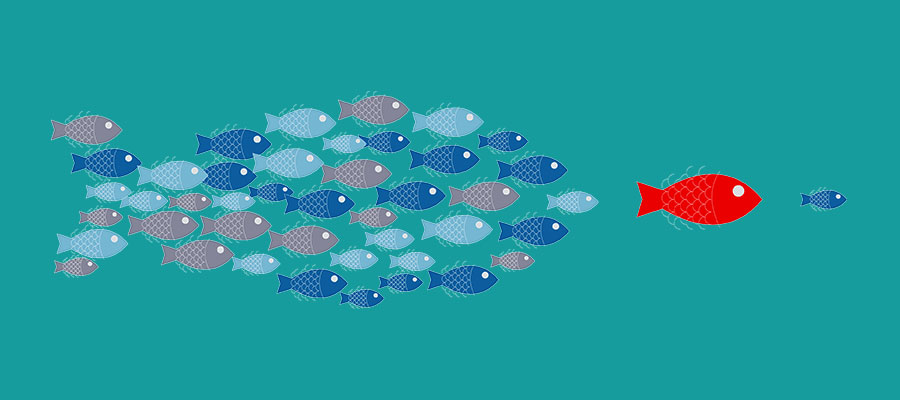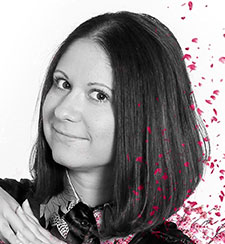Do semantics have anything to do with this? should have been the actual title of this post… Fishy? Keep reading, you will understand what I mean.
This adventure all started with one simple question: Why do so many disagreements stem from the interpretation of words?
In the professional setting of a creative field the concepts we debate about are even more prone to miscommunication. The simple meaning of the aesthetics of things is enough to have some of us start great philosophical debates over the slightest color change or page orientation. And the sole meaning of terms such as “aesthetics” can throw off the most experienced designer, no matter what type of a designer you are. Now in the educational setting such concepts can have even more layers to them and aesthetics is no exception. How can we best understand our agenda when we design for training purposes if it isn’t by consciously doing the effort of defining such principles for ourselves in an attempt to better grasp our roles as designers in a field of such great importance to individuals’ personal and professional growth? The exercise is quite challenging and the result of it is maybe a little transient given the fact that we constantly evolve on our jobs, often turning our worlds upside down in the process. But in order to connect with one another, such an exercise can come in handy, as knowing thyself is most useful when trying to get to know someone else and collaborate. Now that we have established that a designer’s work is often defined by our interpretation of concepts such as “aesthetics”, let’s try out the exercise of looking closely at such an ill-defined term. The impact that such definitions have on our every-day creative process, our belief systems with regards to our treatment of those concepts and our overall understanding of the world and its limitations can be… well enough to give you a headache. No wonder we debate about those things!
False foundations impacting society and our individual political stance
We were brought up to believe that what is aesthetical is automatically beautiful, when in fact the word has no positive or negative connotation to it; “an aesthetic is something that promotes our senses”.1 If we look into the semantics of it all, the adjective version of the word is often associated with the appreciation of beauty, while the noun version of the word is often referred to as a set of principles. Therefore, aesthetics can be viewed much more expansively, as the contrary would only limit the definition of the word to one biased understanding, ultimately limiting learning. Prejudices toward certain words, perspectives, subjects are often inevitable, but we ought to be conscious of the phenomenon and actively avoid delivering common misconceived facts as truths. It is important not to build upon false foundations that are sustained by our society, as some of us might not abide to mainstream interpretations of words and open-mindedly create to achieve greater innovative realities.
Our body can be affected, awaken and moved emotionally at varying degrees by the aesthetics of the world around us. The opposite of being mentally awakened would be to expect anaesthetic reactions, deaden reactions toward subjects2. Being mentally inert leads to blind obedience, blind compliance and finally blind agreement with various educational messages. In such a case, education becomes more political and serves the purpose and agenda of the dominant caste who created the message. How is it healthy to remain passive, when American history “textbooks authors propagate factually false, Eurocentric, and mythologized views of history”? 3 How is it healthy to remain passive, when even the act of learning is misinterpreted?
Multiple truths forming the all-encompassing truth
A common misconception of knowledge is that one can only learn about a subject. To rise over society’s erroneous beliefs, learning must happen with, through, and about subjects.4 While Plato’s theory of forms mentions an ultimate common truth of good5, all physical things are different manifestations of various forms that belong, in one way or another, to the ultimate truth of good. The physical world can manifest itself differently for me and for you; many different realities, interpretations, and perspectives build the ultimate truth of good. Thus, to reach that which is good, one needs to open up to more than one view of the world around them, freeing themselves from Plato’s allegory of the cave. Learning from various channels, including with, through and about subjects (subjects, here referring to objects, people, and entire systems) can only lead you closer to the ultimate truth.
Thus we can assume that it is mentally unhealthy to think that our understanding of reality is limited to different perspectives that can possibly never meet on common ground. Allowing people to think that there is no need to find a meeting point to our multiple perspectives is like allowing people to think that in certain realities, violence, abuse, and other such injustices are reasonable. Allowing people to think that there is no need to find a common ground to our multiple perspectives is like allowing people not to be bothered with anything that does not directly affect their personal reality. Not believing that an objective, philosophical, scientific view can answer moral questions is like “providing people with an excuse for unethical practices”6. We need to learn to reason logically about stuff that matters, including aesthetics.
Get involved in the common reality and make a difference
When striving to see the world through someone else’s lens, one becomes critical of its own views, one becomes less self-absorbed, and one comes closer to the ultimate truth. By being critically, creatively and innovatively involved in learning, one is on the route of empowering the weak, the poor, and those belonging to minority groups. There are infinite possibilities to get involved in our common reality and make a difference. Empowering knowledge leads to empowered individuals, who in turn empower the individuals around them. Empowerment is a healthy plague. It takes one inspirational individual like Sarah Kay and her spoken word poetry7, or William Cleveland and his community art therapy8, or Britta Riley and her window farming project9, or Jane McGonigal and her “world saving” games10 to inspire someone to move forward toward a healthful change.
Some say that technology will participate in saving the world; others say that only technology can save the world. I say that technology will provide us with the means to save the world, but there are still minds behind it that will need to make sure that technology is to be used for democracy to reach higher levels of existence through a more liberal pattern of communication and creation amongst different members of society.
Cultivating satisfaction toward the current state of power dynamics is detrimental to evolution. We need to move, need to be in a constant flux of adjustment to a more fair relationship between the dominated and the oppressed, realizing that either side can empower the other, thus blurring the lines that separate the powerful from the powerless. “If the structure does not permit dialogue [between different parties], the structure must be changed”11. Through collaboration, we ought to strive for growth and aesthetic awakening.
Ok, this is where it led me… where does defining aesthetics lead you?
Some of the individuals that shape my semantics and thus shape my collaborations
1Karen Heid. Aesthetic development: A cognitive experience.
2Ken Robinson. Changing education paradigm.
3James Loewen. Lies my teacher told me.
4Harold Pearse. Themes, cross-curricular connections and daily drawing.
6Sam Harris. Science can answer moral questions.
7Sarah Kay. If I should have a daughter…
8William Cleveland. Art and upheaval.
9Britta Rilley. A garden in my apartment.






